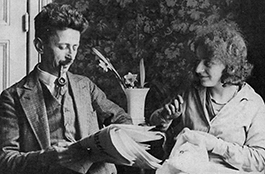Search for Names, Places and Biographies
Already layed Stumbling Stones
Suche
Simon Parnass * 1879
Methfesselstraße 13 (Eimsbüttel, Eimsbüttel)
Treblinka
ermordet 1942
further stumbling stones in Methfesselstraße 13:
Hertha Parnass
Hertha Parnass, née Emanuel, born 6/29/1906 in Hamburg, murdered in Treblinka
Simon Parnass, born 12/51879 in Taropol, deported to Zbaszyn 10/28/1938, murdered in Treblinka
Methfesselstrasse 13
Hertha and Simon Parnass were the parents of the well-known Hamburg journalist and writer Peggy Parnass. Hertha Parnass was the daughter of Franziska and Iwan Emanuel (see Emanuel family) Simon Parnass' parents were named Meir and Sophie Parnass. Simon Parnass was a Polish citizen respectively stateless. Tarnopol, his place of birth, was in Galicia, Poland, and today belongs to the Ukraine. The Parnass' had two children, a daughter, Ruth Peggy Sophie, and a son, Gerd Hans Ludwig (now Gady). Both children were officially stateless and left Germany at the beginning of 1939 with a children's transport. They came to Sweden, where they grew up separately; Peggy lived with foster parents and in institutions, moving twelve times; her brother Gady first lived with four foster families, and then spent five years in an orphanage. From Sweden, the siblings went to Scotland and from there to London to join an uncle, the only survivor of Simon Parnass' twelve siblings.
At the end of the 1960s, Erika Runge published an interview with Peggy Parnass, where Peggy gave an extremely moving account of her childhood. "When I think of my childhood, I think of my mother: she was petite and had wonderfully fragrant skin, because every day she washed herself from head to toe, standing naked at the kitchen sink. We were very poor, so there was only cold water in our apartment, in the kitchen. Even though she had to work hard, her hands were as smooth as lilies, because she always rubbed them with vaseline. And on days when I had been an especially good girl, I was allowed to sleep in her bed." And about her father, Peggy Parnass said: "He was a gambler. At least five times a week, he would swear never to gamble again. He was thirty years older than my mother and had had many women before her, whom he ruined, and men, too. They all fell for him, because he was so charming, so witty, and so good-humored. In her book Kindheit ("Childhood”), Peggy Parnass describes her father Simon as "small, slim, with a lot of curly black hair. And an elegant mustache – not one like Hitler’s, but over the whole width of his lips. A very handsome man with a slim face, a high brow and smiling eyes. A person always up to some sort of mischief, colorful and adventurous, disposed to mirth. His hands so slim and sensitive you would think they handled instruments quite different from playing cards. But he was totally unmusical and sang heartbreakingly out of tune."
Peggy Parnass remembers her parents as being passionately in love; at her request, a third Stumbling Stone was laid before the house in Methfesselstrasse, engraved Die Liebenden ("The Lovers”).
Simon Parnass was an auctioneer by trade. After he was barred from working in his profession because he was Jewish, he worked in the port. He had come to Hamburg as a very young man at the end of the 19th century and lived in Hamburg since the beginning of the 20th century. In World War I, he suffered a lung crush in the trenches, and later caught tuberculosis on top. Peggy remembers her father’s war decorations, medals he kept in a cardboard box. The Parnass family lived at Bartelsstrasse 94, before moving to Methfesselstrasse 13 at the end of 1935.
After the Nazis’ rise to power in 1933, Hertha and Simon Parnass desperately tried to emigrate – no matter where to. However, all applications were turned down. Their emigration probably failed because of Simon’s chronic lung ailment and lack ofmoney. At the end, the family lived from welfare support from the Jewish Community.
In the course of the "Polish operation” at the end of 1938, Simon Parnass was deported to Poland. However, he succeeded in returning to Hamburg secretly to get his wife. The couple succeeded in getting to Poland, where, according to the family, they lived in Cracow and later in the Warsaw ghetto. From there, they were deported to the Treblinka extermination camp and murdered.
Translated by Peter Hubschmid
Kindly supported by the Hermann Reemtsma Stiftung, Hamburg.
Stand: February 2018
© Susanne Lohmeyer
Quellen: 1; 2 (FVg 4386); 4; 8; Erika Runge, Frauen, S. 97ff.; Peggy Parnass, Kindheit; Gesche-M. Cordes, Stolpersteine …, S. 100; Telefongespräch mit Peggy Parnass am 13.8.2012.
Zur Nummerierung häufig genutzter Quellen siehe Link "Recherche und Quellen".


